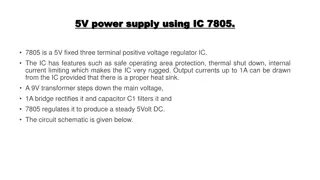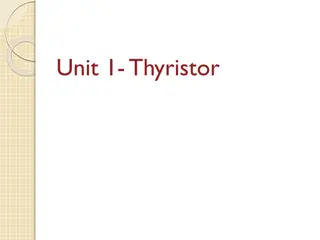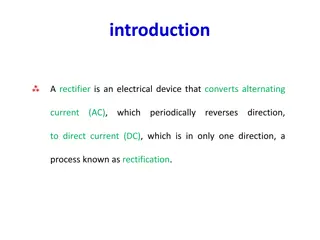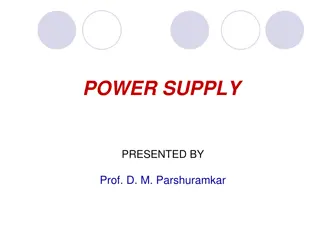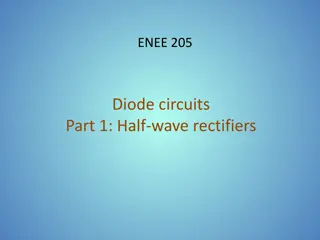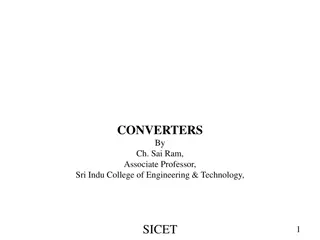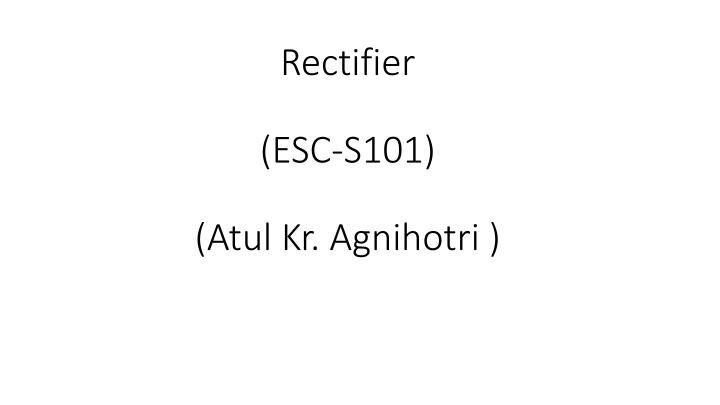
Different Types of Rectifiers for Electrical Applications
Explore the world of rectifiers, devices that convert AC to DC, including half-wave rectifiers, full-wave rectifiers, and bridge rectifiers. Learn about their working principles, applications, and output voltage calculations. Discover the differences between half-wave and full-wave rectification methods.
Download Presentation

Please find below an Image/Link to download the presentation.
The content on the website is provided AS IS for your information and personal use only. It may not be sold, licensed, or shared on other websites without obtaining consent from the author. If you encounter any issues during the download, it is possible that the publisher has removed the file from their server.
You are allowed to download the files provided on this website for personal or commercial use, subject to the condition that they are used lawfully. All files are the property of their respective owners.
The content on the website is provided AS IS for your information and personal use only. It may not be sold, licensed, or shared on other websites without obtaining consent from the author.
E N D
Presentation Transcript
Rectifier (ESC-S101) (Atul Kr. Agnihotri )
introduction introduction A rectifier is an electrical device that converts alternating current (AC), which periodically reverses direction, to direct current (DC), which is in only one direction, a process known as rectification.
Types of Rectifiers Types of Rectifiers Half wave Rectifier Full wave Rectifier Bridge Rectifier
Half wave rectifier Half wave rectifier In half wave rectification, either the positive or negative half of the AC wave is passed, while the other half is blocked. Because only one half of the input waveform reaches the output, it is very inefficient if used for power transfer.
Half wave rectifier working animation Half wave rectifier working animation
Half wave rectification Half wave rectification
Output dc voltage calculation Output dc voltage calculation The output DC voltage of a half wave rectifier can be calculated with the following two ideal equations
Full wave rectification Full wave rectification For single-phase AC, if the transformer is center-tapped, then two diodes back-to- back (i.e. anodes-to-anode or cathode-to-cathode) can form a full-wave rectifier.
Full wave rectifier using transformer and 2 diodes Full wave rectifier using transformer and 2 diodes
Full wave rectification Full wave rectification In a circuit with a non - center tapped transformer, four diodes are required instead of the one needed for half-wave rectification.
Full wave rectifier working animation Full wave rectifier working animation
formula formula The average and root-mean-square output voltages of an ideal single phase full wave rectifier can be calculated as:
Output voltage of the full wave rectifier Animation Output voltage of the full wave rectifier Animation
Bridge rectifier Bridge rectifier A bridge rectifier makes use of four diodes in a bridge arrangement to achieve full-wave rectification.
Bridge rectifier circuit Bridge rectifier circuit
Bridge rectifier working animation Bridge rectifier working animation

